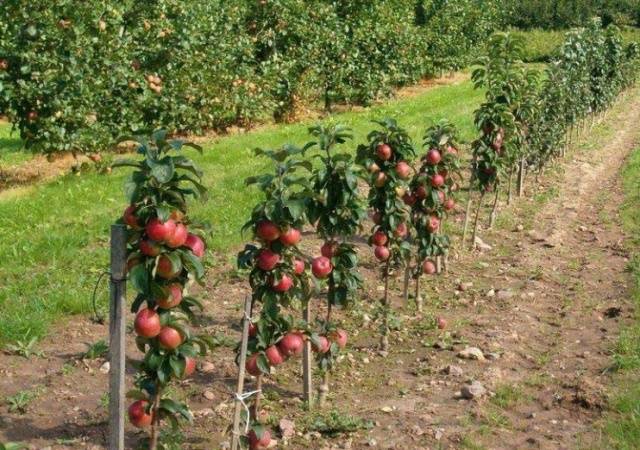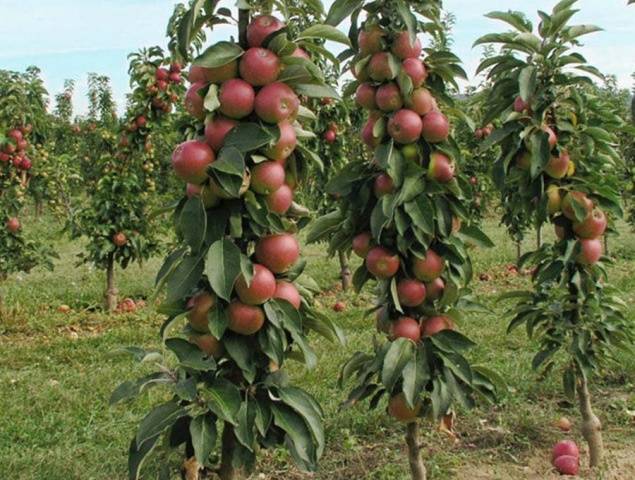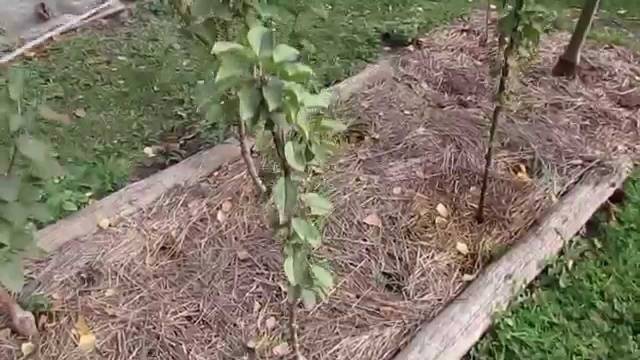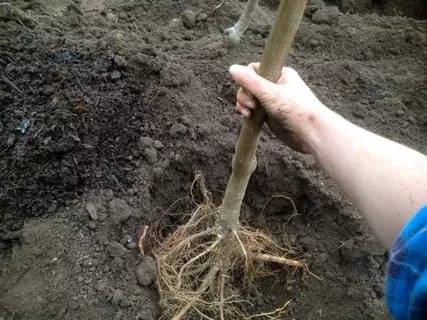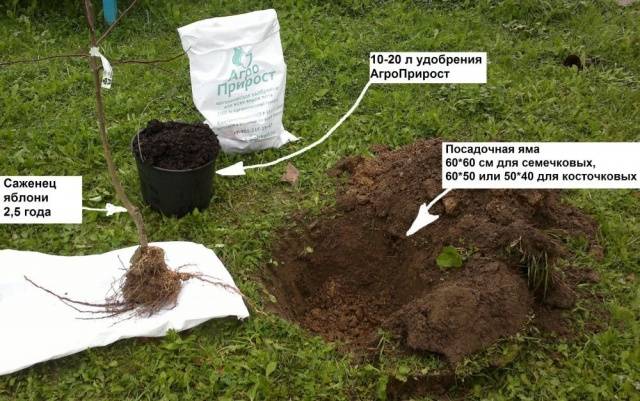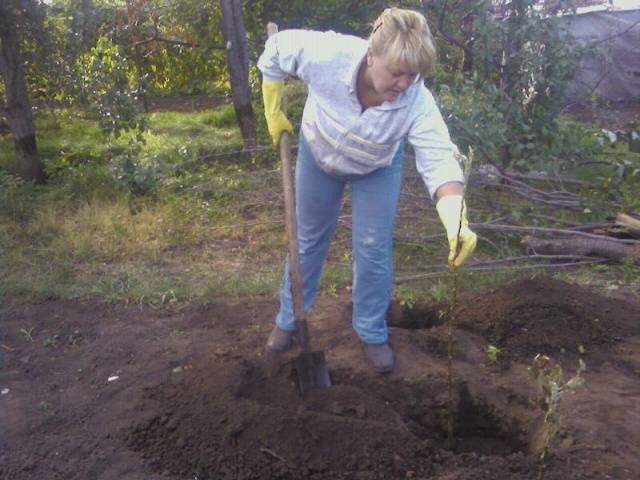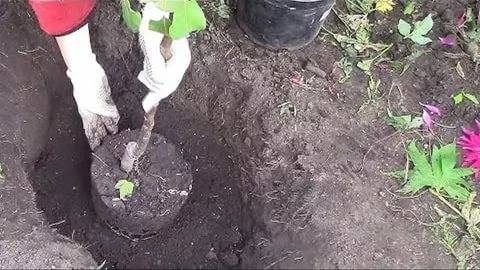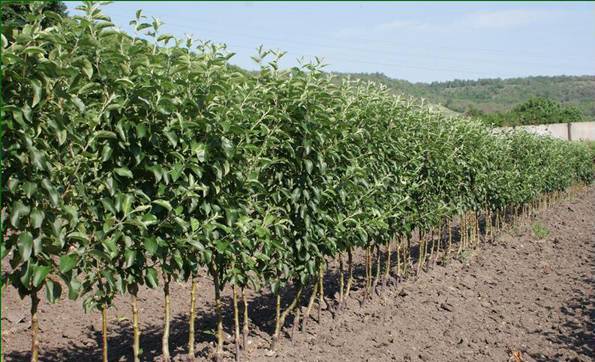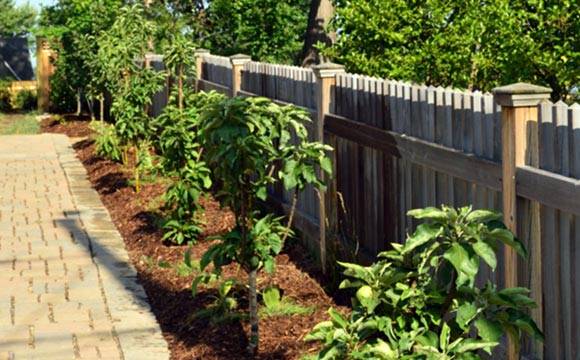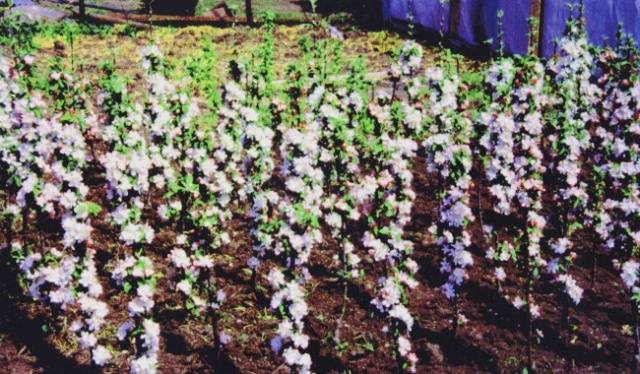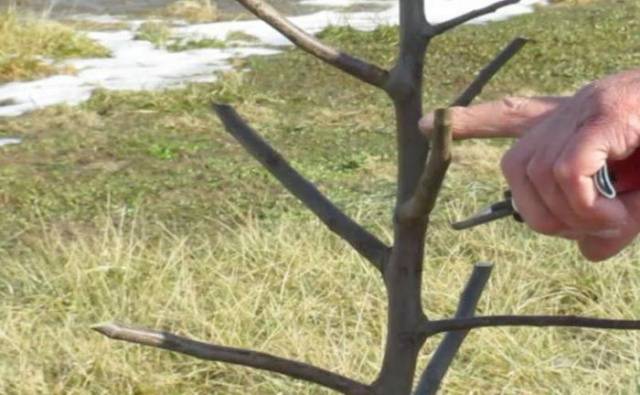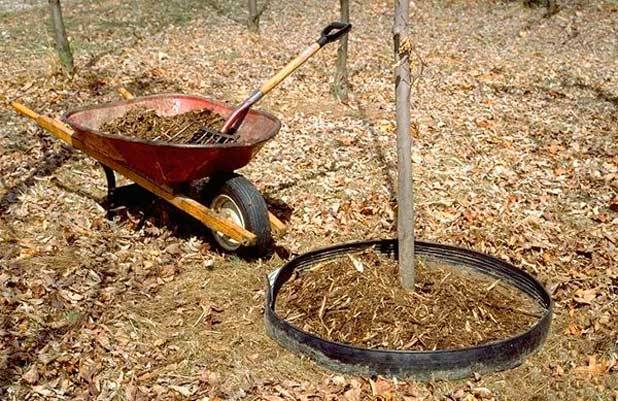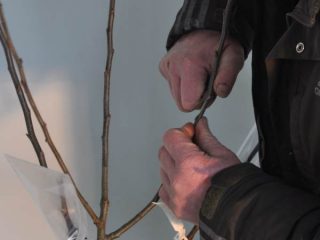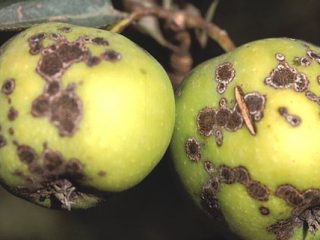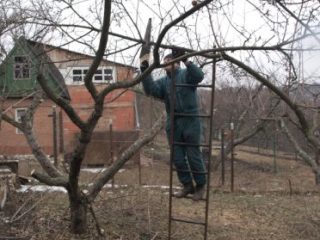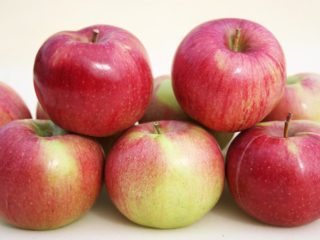Content
The columnar tree species, which appeared in the 60s of the last century as a result of a mutation of the common apple tree, quickly gained popularity among gardeners. The absence of a spreading crown allows them to be used for small areas, while getting good yields. However, caring for them requires special attention. Correct fit of the columnar is especially important apple trees in spring and autumn.
Today there are about a hundred varieties of columnar apple trees, differing in size, taste, degree of hardiness in relation to a variety of climatic conditions. But how to plant a columnar apple tree?
Features of the new species
The columnar apple tree differs from the usual one, first of all, in its appearance:
- it has no lateral branches forming a branched crown;
- it has a thicker trunk, covered with dense foliage and miniature twigs;
- for a columnar apple tree, the correct location and preservation of the growth point is important, otherwise the tree will stop growing;
- the first two years, too many branches are formed from the side shoots, requiring pruning.
Columnar apple trees have a number of advantages, thanks to which they are widespread:
- due to their small size, harvesting is not particularly difficult;
- having begun fruiting already 2 or 3 years after planting, they delight with a bountiful harvest for a decade and a half;
- the productivity of columnar apple trees is higher than that of ordinary ones - up to 1 kg of juicy fruits can be obtained from an annual tree, and an adult apple tree gives up to 12 kg;
- in the space occupied by an ordinary apple tree, you can plant up to a dozen columnar trees of different varieties;
- due to their unusual appearance, these trees perform an additional decorative function on the site.
Preparatory work before landing
Healthy and productive columnar apple trees can be obtained if:
- full-fledged seedlings were purchased;
- the right place for planting trees;
- the conditions and terms of planting columnar apple trees are met.
Selection of material
For planting columnar apple trees in autumn you need to take seedlings of zoned varieties, whose hardiness has already passed the test of time in this region. It is better to select them in specialized nurseries, whose workers will advise on the properties of each of the columnar apple varieties:
- annual seedlings will take root faster, without side branches - usually they have only a few buds;
- for seedlings, the leaf fall phase must have already passed, the timing of which varies by region.
The completion of leaf fall for seedlings of columnar apple trees is one of the most important conditions for autumn planting, since only after this begins the process of preparing the tree for winter. At this time, the ground part is already resting, and the root system of the apple tree is increasing in volume - this process continues until the soil temperature stably drops to +4 degrees. The optimal time for planting seedlings in the fall is 3 weeks before the appearance of stable frosts, so you should not rush to purchase them.
When buying columnar apple seedlings, it is best to ensure that the root system is closed during transport to avoid drying out.If the roots of apple trees are open, you need to wrap them with a damp cloth, after checking the absence of dried or damaged parts - the roots must be elastic, alive. If the seedlings are not immediately planted, you can dig them in or place them in a container with wet sawdust - the main thing is that the roots of the seedlings do not dry out. Before planting the columnar apple, the roots can be placed in the stimulant solution overnight.
Tree planting site
Columnar apple trees grow well in open sunny areas with fertile soil - sandy loam and loam soils are favorable for them. Trees have long tap roots. Therefore, it is better to plant them in elevated places where there is no access to groundwater. Columnar apple trees do not tolerate waterlogging as a result of stagnant rainwater in the area of the root collar. Therefore, it is necessary to ensure the outflow of excess moisture from the tree using grooves. The area where apple trees grow must also be protected from gusts of wind, since the roots of the tree may be exposed or even frostbite.
Soil preparation
Columnar apple trees can be planted in both spring and fall. For the spring planting of seedlings, the soil is prepared in the fall. But most gardeners consider the autumn planting of a columnar type of apple trees to be preferable - the risk of seedlings blooming in the same spring will be excluded.
Preparatory work should be carried out 3-4 weeks before planting seedlings:
- the area intended for planting columnar varieties of apple trees must be thoroughly cleaned of debris and dug up to a depth of 2 shovel bayonets;
- planting holes should be prepared for seedlings measuring 0.9 m wide and the same depth;
- drive a stake up to 2 m high in the middle of each of them - it will serve as a support for the tree;
- there should be a gap of half a meter between the holes, and 1 m between the rows; when preparing holes for planting seedlings, the upper and lower layers of the soil are placed separately - on both sides of the holes;
- drainage up to 20-25 cm high is laid on the bottom of the pit - expanded clay, gravel, sand;
- mix the soil with fertilizers in the form of potassium and phosphorus salts, add compost, a glass of wood ash and pour half of the prepared mixture into the hole.
Planting seedlings
When planting columnar apple trees, it is worth considering the following recommendations:
- set the tree trunk vertically in the hole, the graft should be turned to the south;
- straighten the roots - they should sit freely without bending and trimming;
- fill the hole evenly up to half the volume;
- slightly compacting the soil around the seedling, it is necessary to pour half a bucket of settled water at room temperature into the hole;
- when all the water is absorbed, completely fill the hole with loose earth, leaving no voids;
- check the location of the root collar - it should be 2-3 cm above the ground surface, otherwise shoots from the scion will begin to grow;
- tamp the soil around the apple tree trunk and tie the seedling to the support;
- arrange near-trunk circles with small sides and water the apple trees - for each rate from 1 to 2 buckets of water;
- near-stem circles are mulched after planting with peat or other material.
The video shows the planting process:
Errors allowed when landing
The influence of any negative factor can slow down the development of a columnar apple tree - its yield decreases, which can no longer be restored. Therefore, you need to know how to plant correctly. More often than not, these factors are associated not with natural phenomena, but with the mistakes of the gardeners themselves.
- One of them is planting the seedling too deep. Often inexperienced gardeners confuse the grafting site and the root collar and deeply deepen it. As a result, shoots develop from the roots, and the varietality of the columnar apple tree is lost. To avoid this error, it is recommended to wipe the seedling with a damp cloth.Then you can see the transition zone between brown and green, where the root collar is located.
- Planting a columnar apple tree in unprepared soil can lead to excessive subsidence. For planting a tree in autumn you need to prepare the holes in a month. In a few weeks, the soil will have time to settle well, and the fertilizers applied will partially decompose.
- Instead of mixing garden soil with minerals, some gardeners, when planting seedlings in the autumn, replace fertilizers with fertile soil from the store. The use of fertilizers creates a layer of nutrient medium under the root system.
- Some growers over-fertilize the hole or add fresh manure. This is also unacceptable, as it begins to inhibit root development and weakens the tree.
- Mistakes are also possible when buying seedlings. Unscrupulous sellers may offer seedlings, the root system of which is already dry or damaged. How to plant such apple trees? After all, their survival rate will be low. Therefore, experts still advise purchasing apple trees with open roots, which can be carefully considered when buying.
Agrotechnics
Cultivation of columnar apple trees requires certain care rules to maintain their health and yield.
Organization of watering
Watering columnar apple trees should be abundant during the first years after planting. It should be carried out 2 times a week. It should be especially intense during dry seasons. Watering methods can be different:
- the creation of grooves;
- sprinkling;
- watering holes;
- irrigation;
- drip irrigation.
Watering trees should be carried out throughout the summer. The last procedure is carried out at the beginning of September, after which watering stops. Otherwise, the growth of the tree will continue, and before wintering, it must rest.
Loosening
In order to retain moisture under the tree and fill the soil with oxygen, it must be carefully loosened after each watering. After it, dry peat, foliage or sawdust is scattered around the tree. If the seedlings are planted on a slope, loosening can damage the roots, so a different method is used. In the near-trunk circles of apple trees, siderates are sown, which are regularly mowed.
Top dressing
For the full growth and development of a tree, systematic feeding is necessary. In the spring, when the buds have not yet blossomed, the seedlings are fed with nitrogen compounds. The second feeding of trees with complex fertilization is carried out in June. At the end of summer, potassium salts are used to accelerate the ripening of the shoots. In addition, you can spray the crown with urea.
Pruning trees
It is carried out in the second year after planting, usually in the spring, before the start of sap flow. Pruning frees the tree from damaged and diseased branches. Side shoots are also removed. After pruning, only two growth points are left on the tree. In the second year, of the two grown shoots, they leave the vertical one. It is not necessary to form a crown, since the tree itself retains the appearance of the column.
Shelter for the winter
When sheltering columnar apple trees for the winter, the apical bud and roots require special attention. A plastic wrap cap is put on top of the tree, under which the bud is insulated with a rag. The root system of the apple tree is insulated with spruce branches, the growth point can be insulated with several layers of burlap, wrapped with nylon tights. Snow protects best from frost, so you need to cover the trunk circle of a columnar apple tree with a thick layer of snow. However, in early spring, before the melting begins, the snow must be removed so as not to flood the roots of the apple tree.
Conclusion
If the columnar apple tree is planted correctly and all the rules of agricultural technology are observed, in winter there will always be fragrant juicy apples from their garden on the table.
